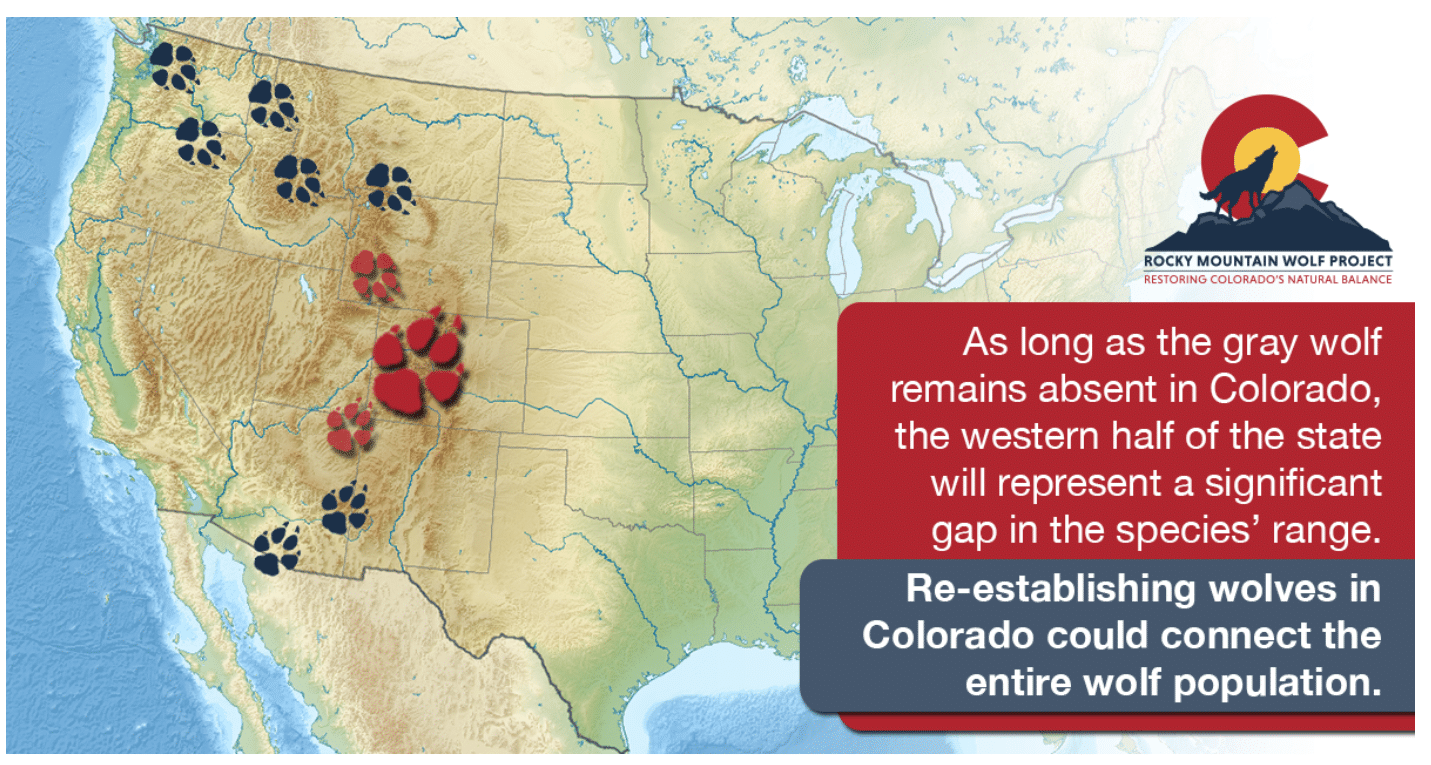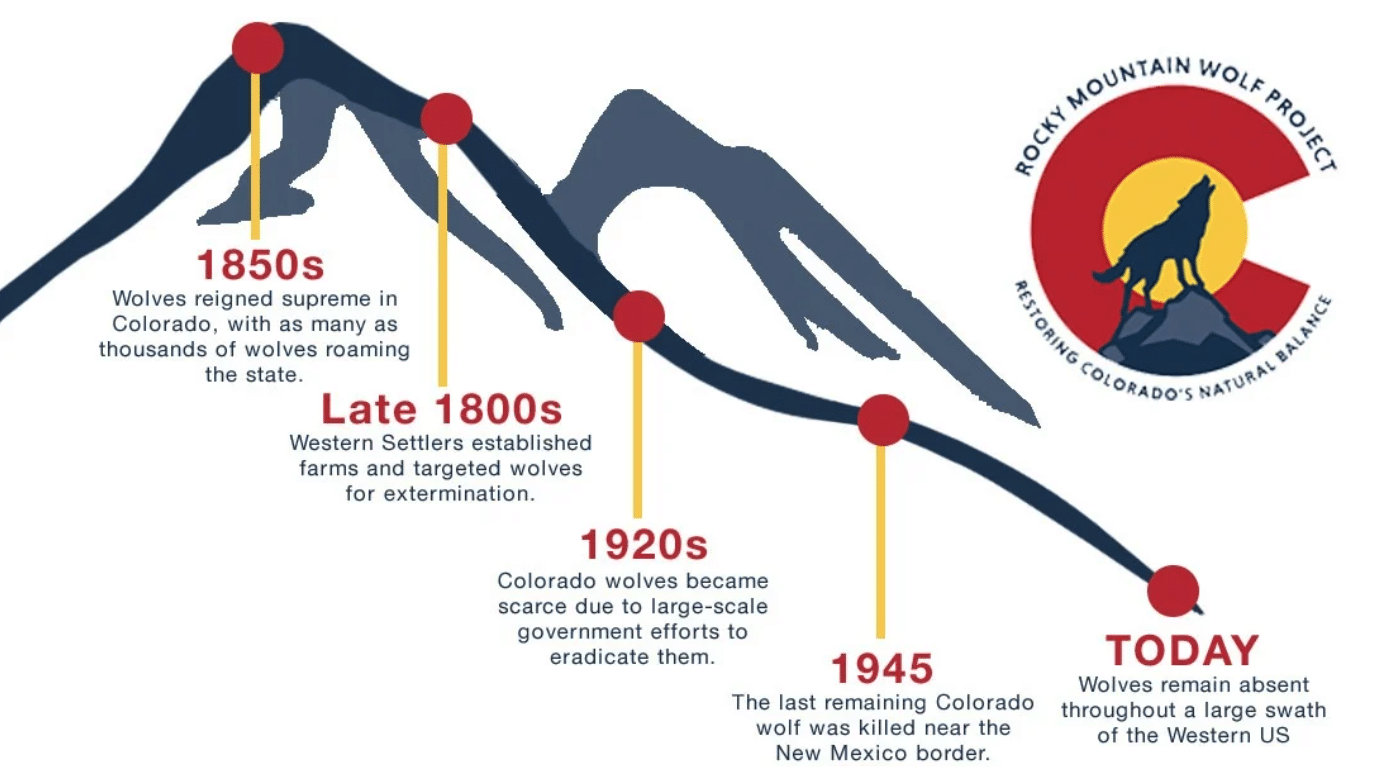Voters decide to reintroduce wolves to Colorado
On Tuesday, Nov. 3, voters in Colorado were asked whether they supported a ballot initiative to reintroduce wolves to the western part of the state.
That measure narrowly passed and wolves will be reintroduced. So what does that look like? What happens next? Here’s what we know.
With the “yes” vote from Tuesday, Nov. 3, the Colorado Parks and Wildlife Commission will need to create a plan to reintroduce wolves to the western part of the state by the end of 2023.
What is the history of gray wolves in Colorado?
Wolves are native to Colorado, but were eradicated from the landscape by the mid-1940s. Government agents shot, trapped and poisoned wolves with the support of the general public.
Are there wolves already in Colorado?
Yes. Colorado Parks and Wildlife fields reports about 100 wolf sightings every year, at least a few of which have been confirmed. Sightings were made in 2020, including this sighting of a pup by a biologist in June. Shortly before the pup sighting, the biologist saw an adult gray wolf.
Also, in January of 2020, a group of six wolves were confirmed in the same area, Moffat County in northwest Colorado. This pack is breeding and had at least one pup in 2020. It’s likely that the pack lives partly in Wyoming and it could have produced the pup there.
Where will wolves be reintroduced at?
The ballot initiative states that wolves will be reintroduced west of the continental divide in Colorado. Basically, that means the Rocky Mountains and west into what is called the Western Slope of Colorado.
What happens next?
Colorado Parks and Wildlife must put a plan together that:
- Uses the best scientific data available;
- Includes input and information from statewide public hearings;
- Includes scientific, economic and social considerations;
- Pays fair compensation to owners of livestock for any losses caused by gray wolves; and
- Assists owners of livestock in preventing and resolving conflicts between wolves and livestock.

Source: Rocky Mountain Wolf Project
Who pays for this reintroduction?
Taxpayers will fund it. According to CPW:
“Costs for the development and implementation of the management plan and reintroduction, and for fair compensation for livestock losses as called for in the ballot initiative are to be borne by CPW’s wildlife cash fund (hunting- and fishing-derived revenue), unless the wildlife cash fund cannot pay for such expenses.
There will be funding and staffing impacts to CPW, should a reintroduction occur. A more precise understanding of what this would look like will be apparent after a management plan is developed.”

Source: Rocky Mountain Wolf Project
When will wolves be reintroduced?
Colorado Parks and Wildlife must begin reintroductions of gray wolves by Dec. 31, 2023.
Who would manage the population of wolves in Colorado?
Since gray wolves are scheduled to be removed from the Endangered Species Act in early 2021, Colorado Parks and Wildlife will be responsible for wolf management in the state. Should gray wolves not be removed from the ESA, the United States Fish and Wildlife Service would be the management authority.
What prey exists for wolves in Colorado?
Colorado has an elk population estimated at 287,000. This population would be their main source of prey, although they will also take moose and deer, and the state’s other hoofed mammals.
How does the gray wolf’s removal from the Endangered Species List affect this effort?
Advocates say that the delisting will actually make this reintroduction simpler. A federal permit will not be needed for this reintroduction since states are now scheduled to manage their own populations.
What does Colorado Parks and Wildlife say?
CPW issued a press release on Thursday. It reads, in part:
“Our agency consists of some of the best and brightest in the field of wildlife management and conservation. I know our wildlife experts encompass the professionalism, expertise, and scientific focus that is essential in developing a strategic species management plan. CPW is committed to developing a comprehensive plan and in order to do that, we will need input from Coloradans across our state. We are evaluating the best path forward to ensure that all statewide interests are well represented.”
Colorado Parks and Wildlife Director Dan Prenzlow
How much will this cost?
It is estimated that the initiative will cost $344,363 in 2021-22 and $467,387 in 2022-23.
This document describes the fiscal impact of the initiative.
Documents
- Colorado Secretary of State “Initiative 107 full text.” (Initiative 107 became Proposition 114 for the 2020 ballot.)
- Colorado Parks and Wildlife FAQ document.
Recent news about wolves in Colorado

The International Wolf Center uses science-based education to teach and inspire the world about wolves, their ecology, and the wolf-human relationship.
